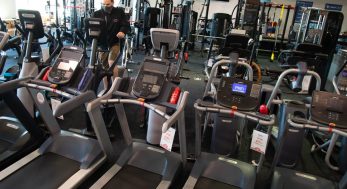Last week I was sitting at my desk at work, hopelessly overrun by charts and messages and callbacks, when a coworker who could sense my despair asked me, “Do you meditate?” She was clearly acknowledging the stress that the long chaotic days at our office have and was suggesting that I need to make sure I take care of my mental health.
“I run,” I answered without thinking too much, but knowing well that this was indeed a very true answer to her question.
I run a lot. Probably 5-6 days a week most weeks for a total of about 10 hours a week. I think there are a lot of misconceptions about why people who exercise a lot do it. Addicted to it? Runner’s high? Endorphins? An escape from home? While these are all reasonable thoughts, they are all wrong.
First, I would like to address two terms that I dislike. I’m not sure who coined the term “runner’s high,” but I’m pretty sure they weren’t a runner. That term implies that runners get a sense of euphoria while running and I just don’t feel like that is true. That’s not to say that running is painful and miserable, it’s just that it’s always work. Yes, some days feel easier than others, but floating around in some euphoric weightless state is something I have never experienced. I also think this term is bad because someone who is just getting into running (or other forms of exercise) may expect to start feeling this make-believe state, and when it never arrives they may feel discouraged.
The other term I dislike is endorphins. Related to “runners high,” many folks hear that running releases endorphins that make you feel good and runners run because they get addicted to these. There is of course science behind this, and, yes, endorphins are a thing and, yes, they are released during exercise. But again, our natural translation of that information is that running induces some magical euphoric state where you should feel good all the time if you’re doing it right. Nope.
As I’ve randomly been pondering these points while running this past week, I decided upon a more accurate description of why the more regular runners, cyclists, exercisers do what we do.
Regular exercise is meditative.
Let me also say that I really dislike the term meditate. To me it has an association of some hippie that I don’t relate to telling me to go in a room and sit still for 30 minutes saying “Om.” Okay, I’m more open-minded than that, but you know I’m right, that’s what a lot of us think about mediation—something that I’m not going to do!
However, I think that the biggest breakthrough that any person can have when trying to make fitness a regular part of their lives is when it becomes meditative.
From Merriam-Webster Dictionary: Mediate—“to engage in contemplation or reflection. To engage in mental exercise (such as concentration on one’s breathing or repetition of a mantra) for the purpose of reaching a heightened level of spiritual awareness.”
As someone who started running regularly only when I turned 30, I can still remember how much work it was to run just three miles. There was nothing euphoric about it and certainly nothing meditative. I just couldn’t wait for it to be over.
But, for some reason, I kept at it. As it got easier physically, it started to get easier mentally. Perhaps I can best explain with a recent experience.
As I have shared plenty in this column, I love running up Jarmans Gap Road, the gravel part that goes up to Shenandoah National Park. Most of the time I hike about 40% of it because it’s so steep. I have done this literally hundreds of times. I do it not because its “exercise,” and not because it makes me feel good (it is never easy). I do it because it gives me some time in the mountains to meditate, to get away and just let my mind wander.
Sometimes Jarmans is really foggy, and if you are starting in the dark, you have about 15 feet of visibility in front of you as you head up the mountain. It’s an interesting sensation: the rest of the world is there, but you just can’t see it. As you head up the mountain, you get into a rhythm of your breathing, your heart rate, and your footfalls. You can get as deep into this as you want. Sometimes I feel like a living machine, parts churning along, engine huffing out steam in a regular pattern with my foot falls. Other times I’m acutely aware of everything around me—sights, sounds, and smells. Sometimes I am thinking about all the stresses in life, and sometimes I don’t even know what I am thinking. And in this general context, I am meditating.
This one foggy morning, I had what I like to call a “Jarmans Fog Warp Experience,” where suddenly, without my really remembering how, I have arrived near the top. Again, it is always work, I was never blissfully floating in euphoria. But I got into such a meditative state that I was able to “check out” mentally, while my body was most definitely working and checked in.
This is the type of meditation we can have by regular exercise. The cyclist. The person on the Stairmaster. The hiker. The swimmer. When exercise patterns are regular and repetitive, we start to physically and mentally yearn for the routine. What once was strenuous and consuming has now become methodical and freeing. We know that we have to warm up into it, that the first 15 minutes will always be work, but then soon, the meditation happens and it puts us into a very necessary headspace for a while.
As I head back into my office, with just as many charts and messages and callbacks as the day before, I head there with some calm, patience, and strength that I gained during my morning meditation. I am a better person for it. It didn’t happen overnight, but I’m glad I kept up with it so many years ago, because now I have a very useful tool to keep my mind and body straight for many years to come.


